Which Functional Tests and Self-Reported Questionnaires Can Help Clinicians Make Valid Return to Sport Decisions in Patients With Chronic Ankle Instability? A Narrative Review and Expert Opinion
- PMID: 35721875
- PMCID: PMC9204606
- DOI: 10.3389/fspor.2022.902886
Which Functional Tests and Self-Reported Questionnaires Can Help Clinicians Make Valid Return to Sport Decisions in Patients With Chronic Ankle Instability? A Narrative Review and Expert Opinion
Abstract
Lateral ankle sprain is the most common injury in sports, with up to 40% of patients developing chronic ankle instability (CAI). One possible cause underlying this high rate of recurrence or feeling of giving way may be a premature return to sport (RTS). Indeed, except for time-based parameters, there are no specific criteria to guide clinicians in their RTS decisions in patients with CAI. A recent international consensus highlighted the relevance and importance of including patient-reported ankle function questionnaires combined with functional tests targeting ankle impairments in this population. Thus, the aim of this narrative review and expert opinion was to identify the most relevant functional performance tests and self-reported questionnaires to help clinicians in their RTS decision-making process following recurrent ankle sprains or surgical ankle stabilization. The PubMed (MEDLINE), PEDro, Cochrane Library and ScienceDirect databases were searched to identify published articles. Results showed that the single leg stance test on firm surfaces, the modified version of the star excursion balance test, the side hop test and the figure-of-8 test appeared to be the most relevant functional performance tests to target ankle impairments in patients with CAI. A combination of the Foot and Ankle Ability Measure (FAAM) and the Ankle Ligament Reconstruction-Return to Sport after Injury (ALR-RSI) questionnaires were the most relevant self-reported questionnaires to assess patient function in the context of CAI. Although these functional tests and questionnaires provide a solid foundation for clinicians to validate their RTS decisions in patient with CAI, objective scientific criteria with cut-off scores are still lacking. In addition to the proposed test cluster, an analysis of the context, in particular characteristics related to sports (e.g., fatigue, cognitive constraints), to obtain more information about the patient's risk of recurrent injury could be of added value when making a RTS decision in patients with CAI. In order to evaluate the strength of evertors under ecological conditions, it would also be interesting to assess the ability to control weight-bearing ankle inversion in a unipodal stance. Further studies are needed to assess the relevance of this proposed test cluster in RTS decision-making following lateral ankle sprain injury and CAI.
Keywords: ankle; functional performance testing; instability; psychological readiness; return to sport (RTS); review (article); self-reported function.
Copyright © 2022 Picot, Hardy, Terrier, Tassignon, Lopes and Fourchet.
Conflict of interest statement
The authors declare that the research was conducted in the absence of any commercial or financial relationships that could be construed as a potential conflict of interest.
Figures
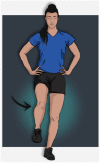
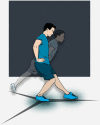

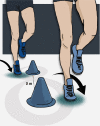

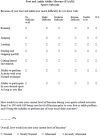

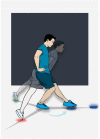
References
Publication types
LinkOut - more resources
Full Text Sources
Miscellaneous

